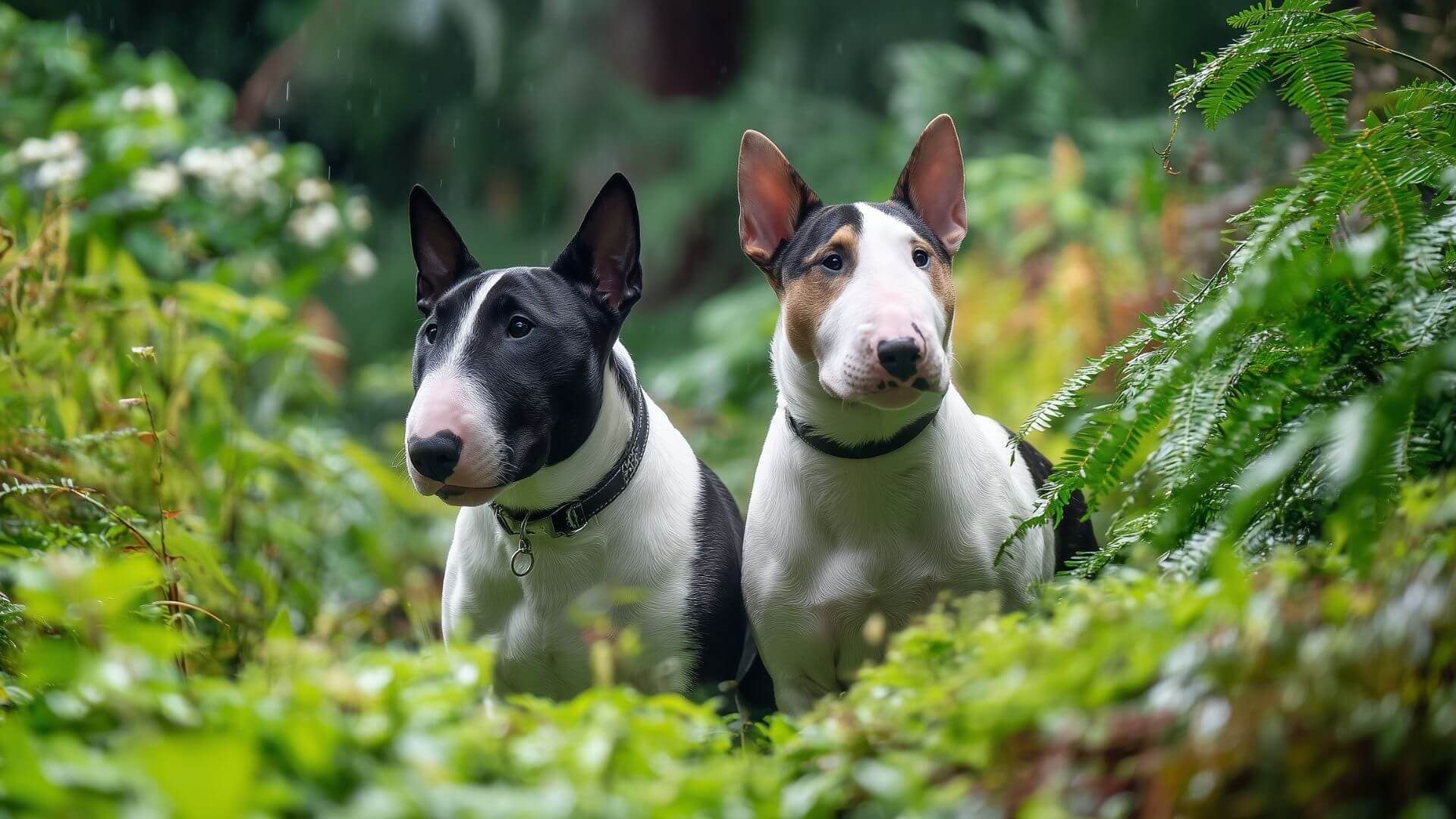
Best Age To Breed A Dog (Male & Female)
Find out the best age to breed dogs and the key factors involved. Ensure your dog’s health and safety with our expert breeding insights.

Connect with responsible Bull Terrier breeders and find the ideal breeding partner for your unique companion
Essential characteristics to consider when breeding these distinctive dogs
11-14 years
With proper care
Playful, Mischievous
Gladiator in a suit
Discover what makes Bull Terriers exceptional breeding companions and why they're treasured worldwide
Bull Terriers are the clowns of the dog world! Their unique egg-shaped head houses a brilliant mind full of mischief and devotion. This distinctive appearance combined with their entertaining personality creates companions that bring daily laughter to families.
Unique personality guaranteed
Every Bull Terrier is a character
Bull Terriers form unbreakable bonds with their families. Known for their patience with children and protective nature, they make excellent family guardians who take their job seriously.
White Bull Terriers are stunning! With proper BAER hearing testing and sun protection, they thrive as healthy companions. Their pure white coat creates an elegant appearance.
True terriers at heart! Bull Terriers possess incredible determination and a strong prey drive that requires understanding and channeling. This terrier spirit, when properly directed through training and activities, creates focused, confident companions who excel in various dog sports.
Breeding preserves this unique terrier character
These exceptional traits make Bull Terriers one of the most entertaining and devoted breeds
Follow these essential guidelines for responsible and successful Bull Terrier breeding
Wait until full maturity! Bull Terriers can be slow to mature mentally. Early breeding may pass on behavioral issues. Patience creates excellence!
Never skip testing to save money - health is paramount!
Once per year max
3-4 litters lifetime
Skip at least one heat cycle
Focus on improving the breed's health and temperament with each generation.
Critical for confident Bull Terriers
Key Focus Areas:
Proper socialization prevents behavioral issues and creates well-adjusted companions.
Hearing Test Essential
20% deafness rate in whites
Test All Puppies
At 5-6 weeks of age
Bilateral vs Unilateral
Identify hearing in both ears
BAER testing ensures puppies can hear commands and bond with families.
Kidney Health Priority
Annual UPC testing essential
Sun Protection
White coats need UV care
Temperament Testing
Select stable, confident dogs
Exercise Needs
Match with active families
Connect with verified Bull Terrier owners for safe and ethical breeding

Bull Terrier

Bull Terrier

Bull Terrier

Bull Terrier

Bull Terrier

Bull Terrier

Bull Terrier

Bull Terrier
From profile to puppies - your bull terrier breeding journey in 4 simple steps
Set up a detailed profile with photos, health records, and pedigree information
Browse verified breeding partners based on breed, location, and compatibility
Message owners directly to discuss breeding plans and health certifications
Meet safely, complete breeding agreements, and welcome healthy puppies
Set up a detailed profile with photos, health records, and pedigree information
Browse verified breeding partners based on breed, location, and compatibility
Message owners directly to discuss breeding plans and health certifications
Meet safely, complete breeding agreements, and welcome healthy puppies
Join thousands of responsible bull terrier owners who trust us for quality breeding connections
Every breeder is verified, ensuring you connect with genuine, responsible pet owners.
Find breeding partners near you to make meetings convenient and stress-free.
Customize your search with detailed filters for breed, age, health status, and more.
Chat directly with pet owners to discuss all details before making any commitments.
Join thousands of responsible bull terrier owners who've found quality breeding partners on Petmeetly.
Get Started NowReal stories from dog owners who found perfect breeding matches on Petmeetly
We found a really sweet mate, and they spent around 3.5 days together.
Caroline
California, US
It was pretty hard to find a mate for my dog, Jethro, but when I did, I also made wonderful friends with the owners! :)
Lenina
England, GB
Yes! Sammy has successfully found a breeding partner through Petmeetly. Things are going really well, and the next heat looks very promising. We’ll keep you updated on how it goes. Thank you!
Laszlo
Ontario, CA
Modern health testing empowers you to create vibrant, healthy Bull Terrier bloodlines that thrive for generations
Simple BAER hearing tests celebrate perfect ears! Testing ensures every puppy hears their family's loving calls and commands throughout life.
Annual UPC Monitoring
Creates lifelong kidney health baseline
Genetic Testing
Identifies clear breeding stock
Proactive care ensures vitality
Annual cardiac evaluations keep those devoted hearts beating strong! Early detection ensures years of playful antics.
Comprehensive heart screening for breeding stock ensures healthy bloodlines.
Sun protection and good pigmentation create healthy, comfortable skin! White Bull Terriers especially benefit from UV care.
Your guidance keeps Bull Terriers glowing
OFA patella evaluation celebrates their sturdy build! Your testing ensures puppies enjoy bouncing and playing without limits.
Most Bull Terriers have excellent patellas
Choosing stable temperaments creates confident, happy companions! Your selection ensures puppies bring joy, not stress, to families.
Your commitment creates joy
By prioritizing comprehensive health testing, you're strengthening the Bull Terrier breed's future. Each thoughtful pairing, backed by BAER testing, kidney monitoring, and cardiac evaluations, contributes to healthier, happier Bull Terriers for generations to come.
Your testing creates healthier generations
Expert advice and tips for Bull Terrier breeding

Find out the best age to breed dogs and the key factors involved. Ensure your dog’s health and safety with our expert breeding insights.

Understand the importance of socializing your pet. This guide will help you create positive experiences for your pet, ensuring they thrive in various environments.

Planning to breed your dog? Use our step-by-step dog breeding checklists to manage health tests, mating, whelping and puppy care—always with vet-backed guidance.
Discover breeding guides for different dog breeds and find the perfect match for your breeding program
Join our community of responsible Bull Terrier breeders committed to preserving this noble breed